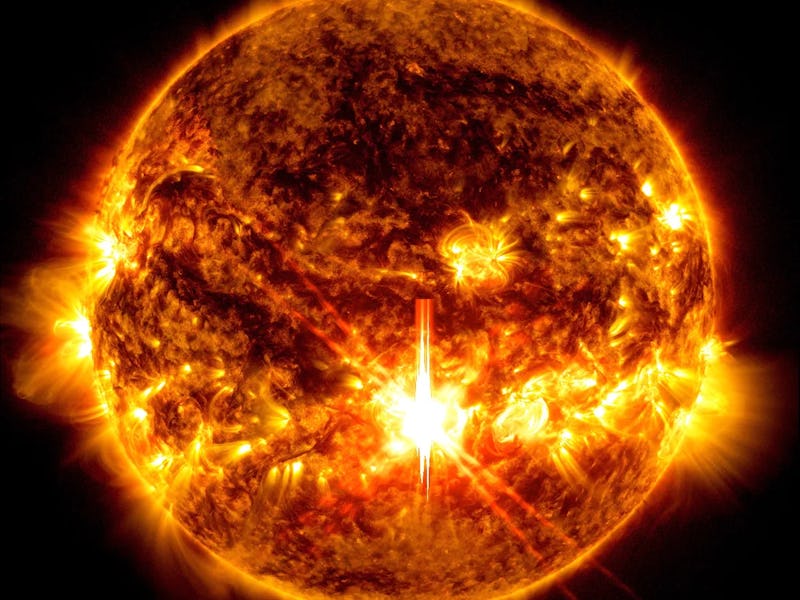Aurora Alert! The Sun Just Unleashed Several X-Class Flares — Here’s Where to Look
Earlier this week, the Sun unleashed several X-class flares.

The Sun is volatile now. That means your chance of viewing an aurora borealis just went up.
Earlier this week, the Sun unleashed several X-class flares. These are categorically the strongest. An active region on the star is facing Earth, and as this place expels charged particles, they bombard us. When they interact with our planet’s magnetic field, they trigger auroras near the north and south poles.
The Sun is just 10 months away from the peak in activity it reaches every 11 years. So now, auroras are likely to appear more often and farther from the poles than usual.
NASA’s Solar Dynamics Observatory spacecraft captured this view of an X9.0 solar flare on October 03, 2024.
On Thursday, the Space Weather Prediction Center of the National Oceanic and Atmospheric Administration (NOAA) put the southernmost extent of auroras, called the view line, near 42 degrees north latitude. It runs from northeast Oregon through mid-Idaho, mid-Wyoming, northern Nebraska, mid-Iowa, northern Illinois, along the border of Michigan and Indiana, mid-New York, southern Vermont and southern New Hampshire.
“Aurora can often be observed somewhere on Earth from just after sunset or just before sunrise. The aurora is not visible during daylight hours. The aurora does not need to be directly overhead but can be observed from as much as 1000 km away when the aurora is bright and if conditions are right,” officials from the Space Weather Prediction Center wrote in a map description.
The aurora forecast for Thursday, October 3, 2024.
Active Region 3842 on the Sun released an X-class flare on Tuesday, the second-strongest flare of the current solar cycle which began in December 2019. Another X-class flare bursted from the Sun on Thursday from the same active place on the star.
“Flares and solar eruptions can impact radio communications, electric power grids, navigation signals, and pose risks to spacecraft and astronauts,” according to NASA officials.
Several spacecraft have been closely monitoring the Sun during its dramatic period. These include the GOES-16 satellite and the Solar Dynamics Observatory. These missions will continue their vigilance as the Sun gets closer to its peak in activity, anticipated to happen in July 2025.